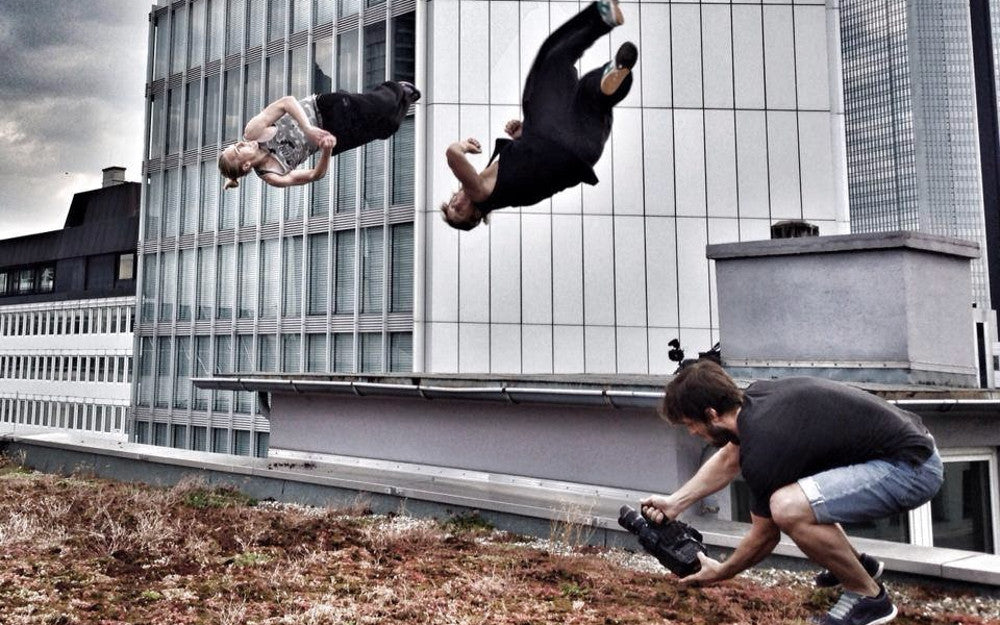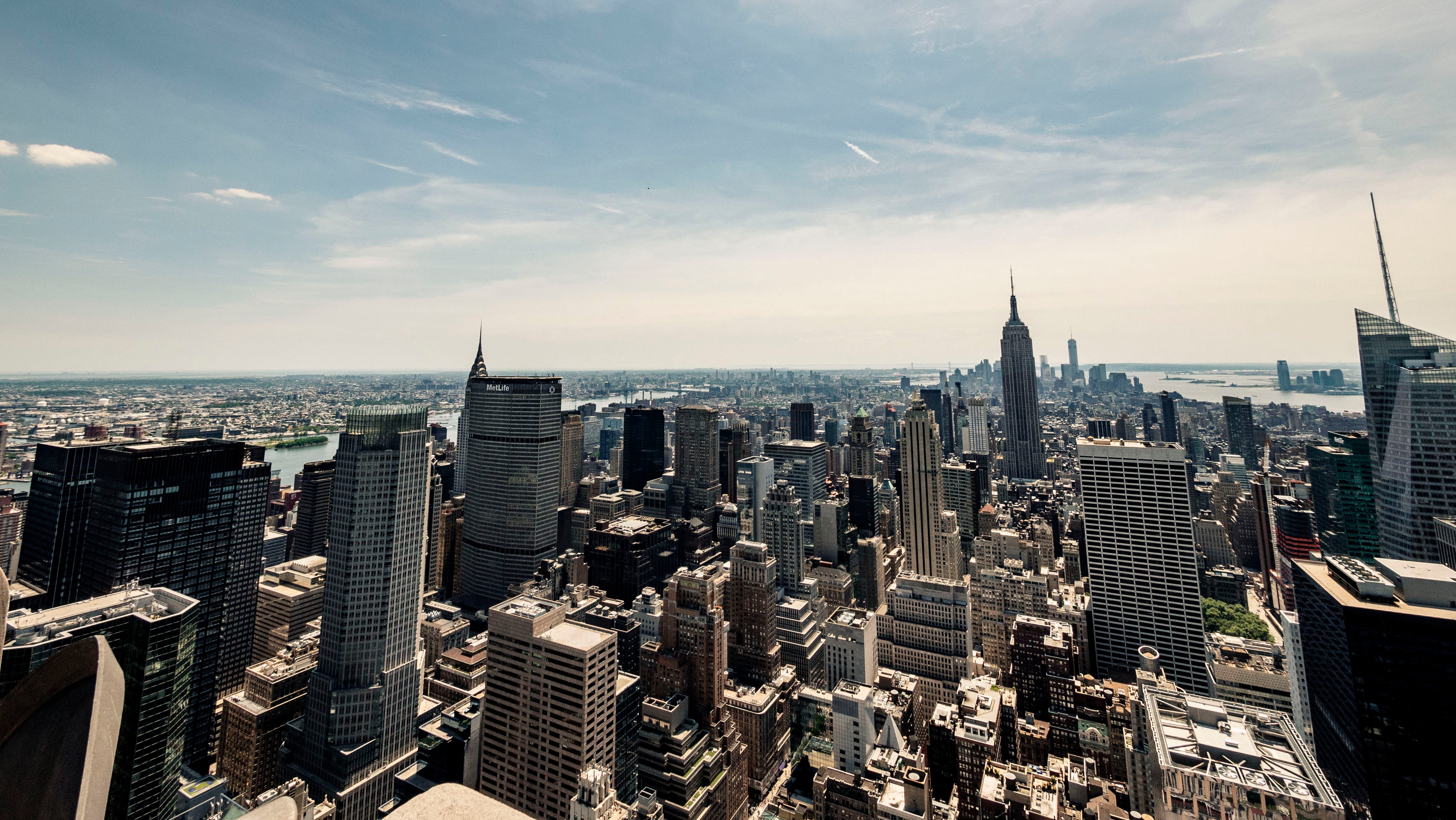The Evolution of Parkour Videos (Part 1)

I take a walk through the history of parkour film making, identifying the video traits that get passed down through the generations. While some traits stick around, some die off, and through random innovation new traits form. I explain all!
The original idea for this article was to do a rundown of some of the most influential parkour videos - influential in the sense they forever changed the way people made videos. As I started going over some old classics I kind of saw a pattern. So I thought I would instead try and write about an ‘evolution’ of parkour videos. Sorry if it’s a bit Eurocentric, I can only really go off what I know. Hopefully I didn’t miss anything too obvious though!
*But just to clarify, this isn’t an exhaustive list of influential or important parkour videos, It’s kinda just some videos where I see things shift in a new direction for the first time. There's not a linear progression of parkour videos, it’s probably more like a tree!*
So taking it right back to what I perceive to be the beginning; before YouTube was around and parkour was a far more obscure activity than it is today. Sometime in early 2004 a group of British lads who went by the name of ‘Team Evolution’ (Now 3run of course!) put out their first proper showreel ‘Evolution’. It was distributed via direct download from their website, and then later picked up traction on popular video sharing platforms of the era like ebaumsworld.
At the time there was barely anything to compare it to, it was fresh and mind blowing. The video itself was basically just a compilation of singular movements, often shot from two angles and featuring a lot of slowmo. You can see lots of inspiration from the Matrix trilogy. There had been other videos that had featured parkour doing rounds on the internet before this, but this was different. It was pure - it wasn’t a gimmick or a side project of some stuntman or martial artist, it was a video of what these guys actually spent their time doing. As such it instantly became the template for making parkour videos.
For a while it was only the 3run guys and perhaps Urban Freeflow who were putting out solid videos; like the sequel to Evolution called Evo-Ex, and then of course Brothers Journey. Then somewhere around early 2006 a team of guys from Belgium came out of the woodwork: The Speeders. Their showreel ‘R-évolution’ dropped onto both the 3run and UF forums, and began to make waves.
You can clearly see the influence of the 3run videos in the Speeders showreel; from the editing style, the movements, even the song choice, not to mention the name. But as the video goes on the movements start to getting increasingly impressive. Some of the stuff in there, especially towards the end was way ahead of its time. 3run finally had some competition on their hands! The video itself did add something to the video making zeitgeist of the era too - they spend the first minute of the video introducing the team one by one. It was something not really seen in parkour videos before that point, and gave the concept of a parkour ‘team’ a bit more legitimacy.
Something funny to notice was just how many huge height drops are in videos from around 2004 right up to 2006!
The Speeders’ contribution didn’t go unnoticed. The following year 3run put out another video that would go on to become a classic. ‘3run Family 07’ featured an introduction of all the team members, plus some other people who would go on to become hugely influential in the community; Daniel Ilabaca and Ryan Doyle.
The production quality had come a long way in just a few years. Better cameras were becoming more affordable, and 3run were becoming increasingly successful. It captured that jovial and chill vibe of an evening training session really well. It was very different in quite a few ways from video’s before it; it was a full edit but all filmed over one evening and split into different sections. For me, there were two main ‘innovations’ here… breaking up the action with some more personal and fun moments before resuming again. And secondly, and equally consequential, the use of a Hip-Hop track.
By 2008 things were starting to look a lot more like this video here, by Chris Ilabaca. Hip-Hop tracks were by far the most popular choice. The ‘density’ of movements had come down a bit, but what was in there was getting better and better. Quality over quantity perhaps. You can see the influence of 3run Family 07 in how the clips are more chronological.
Chris Ilabaca pushed the ‘fun’ aspect of parkour film making forward a lot. He made an effort to capture the sense of humour of the emerging subculture. It was a step forward. Mostly in how seamlessly he achieved that - constantly switching back and forth between showcasing cool movement, and just fun antics between friends. People were really loving it - so many new people were starting to train around this time.
I think the apex of this style of parkour video making came in 2009 with Ampisound’s Are You Some Sort of Idiot?! Hip-Hop was still going strong, Cambridge was still going strong, and as you can see the community was thriving. However videos like this had been coming out for almost 2 years now, and while I think this project represents the most polished form of videos from this era, it was Scott Bass himself who would go on to push things in a fresh direction.
'Live On' was the third video of Ampisound's ‘Progression’ series in early 2010, where he was deliberately experimenting with different styles of video making. The Hip-Hop soundtrack is still there, the community is still there, but that’s where most the similarities end. The movement had taken centre stage again. All the fun stuff is still there, but in Live On the balance is shifted back towards capturing the most impressive movements possible. The innovations here are in the camera work; very close fisheye shots, and rapid camera movements to track the increasingly long lines taken by the athletes.
This video had such a different feel to all that had come before it. There was more and more multi-athlete action, and flow to the shots. Even some experimentation with flipping the camera during flips. There was a vibe to it, like it was greater than the sum of its parts. It made a huge impression on the community as well, and for me kinda marks the start of a new era of parkour video making.
Storm Freerun - Volume 1 came out at the end of 2010 after much hype and anticipation. This video stands alone in many ways. While it has some of the hallmarks of some of the old parkour videos, like the introduction of the team members, it took that and everything else to a whole new level. It stripped away all the chill, jokey stuff and presents something a lot more serious. It was the start of an era where the sport wanted to take itself more seriously. The lines are longer than ever, although done over several takes. But each shot is nigh on perfect, thanks to the cinematography of Claudiu Voicu. (Who I beleive does commercials for companies like Nike now?!)
The parkour community had never seen anything like this level of production before. So whilst it doesn’t really follow the trajectory I’ve been laying out here, it just has to be included for its influence in subsequent video projects. It injected a wave of seriousness back into the scene, and inspired people to take their video production up a notch.
Enter 2011, and enter GUP. You can see the influence of Live On throughout this video; with the close fisheye shots, and even the camera flips. But where our Spanish friends pushed things forward was with the long flowy lines, accentuated of course by their even more flowy sweatpants. They carried on with the increasing trend of the balance shifting back towards showcasing movement instead of antics and fun.
The song choice as well - although the track was still Hip-Hop based, it was starting to branch out into different kinds of music. Which also reflected a more general trend by around 2011. You had Giles working as Visive productions moving away from Hip-Hop tracks on his edits around this time as well. Overall I think Swim or Sink is another one of those videos that has an amazing feel good vibe to it. Film makers were clearly figuring out how to capture this elusive 'vibe'.
I think it’s around this point, towards the end of 2011 where a fork in the evolutionary tree of parkour videos occurs:
The first part of this fork in my opinion was the original Chaps on Tour. Now there had been several other longer length videos that came out before this (like Out of Time), but none made quite the impact on parkour video making itself as this one by Toby Segar. I think due to the quality of Toby’s editing, and his uncanny ability to capture the positive emotions of training. Probably also that he seems to have an innate sense of pacing too - knowing what clip to put in to keep the video engaging.
Toby ramped the antics part of the equation back up again, but through the longer length managed showcase both elements more thoroughly than ever before. It had such a huge influence. Before we knew it, there were so many longer videos coming out featuring multiple sections of fun training montages, punctuated by timelapses and shots of silhouetted figures dancing on rooftops. It’s a trend I definitely noticed, and something I directly attribute to Chaps on Tour.
The second part of the great fork of 2011 was Team Farang’s new content. Both The City and The Temple contained something that I had never seen before in a parkour video - narrative elements. The voice overs at the beginning and throughout add a whole new layer and quality to the videos. For the first time there was overt storytelling mixed in with the action, and it was a pretty huge and influential breakthrough.
The themes in the video were obviously foreshadowed by the Thailand Tour video of the previous year. But with this new narrative element, combined with a sharper edit and production quality, the new Team Farang channel started with a bang. Obviously this kind of film making has worked out really well for Team Farang, and many other channels have started using similar techniques as a result.
- - - - -
So that’s how I see the rough evolution of parkour videos from 2004 right up to the beginning of 2012. You see how massively different 3run's Evolution is compared to Farang's The City. But you can kinda trace the ‘genealogy’ right the way back, through looking at what traits transferred and changed through the years, which I think is really cool!
At some point in the next few weeks I’ll release the final half of this journey through the evolution of parkour videos, and look at where things went after Chaps on Tour and The City, right up until the present day. There’s shifts in technology to talk about, as well as a re-convergence of that fork in the road. I’ve got a lot of research to do!


